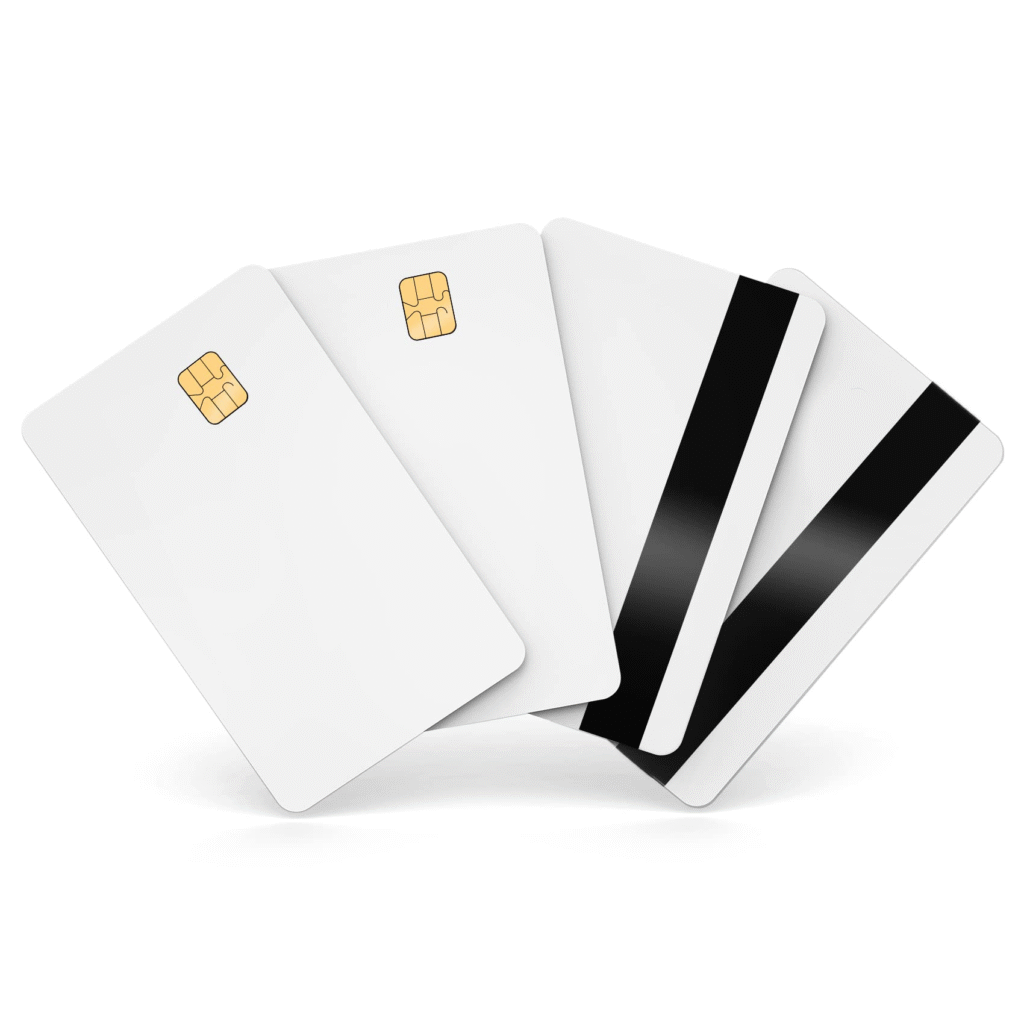Choosing the Right Blank smart card Material for Durability and Printability
The choice of substrate directly impacts the durability, print quality, and overall performance of your blank smart card. Whether you need cards for access control, banking, or employee identification, the wrong material can lead to faded prints, cracked edges, or frequent replacements. How about evaluating different blank smart card material options and selecting the one that’s both durable and printable? Read on to find the answers.
Standard card substrates and their traits
PVC remains the most common substrate, offering predictable print results. PVC prints well and laminates easily, and it supports thermal transfer ribbons. However, PVC can crack under bending and degrade when exposed to sunlight. PET and PET-G provide better stability, and they resist solvents and heat. PC offers superior durability and supports laser engraving, but it comes at a higher cost. Therefore, test samples should be matched to the substrate, use case, and printer. Also, check compatibility and test print samples before approval. Moreover, request technical sheets and ask about temperature ranges.

How durability affects the lifecycle
Durability reduces replacement costs, and it ensures stable performance in access control. For long-term ID or transit cards, choose thicker substrates and robust chips. Conversely, disposable or promotional cards may use thinner PVC to save cost. Also, verify bend tolerance and chemical resistance, and test samples under real conditions. In short, match material to expected wear and environment. Therefore, confirm lamination settings and verify adhesive compatibility. Furthermore, compare manufacturer tolerances and monitor batch variation to ensure consistency.
Printability factors to verify
Surface energy and coating determine how inks adhere, and they affect color accuracy. Offset, dye-sublimation, and thermal transfer require different surfaces. Therefore, choose a coating that is compatible with the selected printing method. Also, check edge quality and thickness consistency, and ensure your printer supports the material. Finally, request sample prints to confirm results. Additionally, ask about recyclable options, and consider end-of-life plans. Consequently, reduce replacements and lower total ownership cost.

Chip bonding and lamination concerns
Chip embedment needs precise lamination, and materials respond differently to heat and adhesive. PET and PC often bond more effectively for dual-interface cards, while PVC may require special adhesives. For contactless antennas, ensure the substrate allows proper antenna placement without delamination. Moreover, check that lamination temperatures do not damage chip functionality. Finally, run a pilot batch and collect field feedback quickly. Additionally, obtain printer profiles and request color proofs.
Environmental and regulatory considerations
Many projects now require recyclable or PVC-free options, and buyers must comply with regulatory limits. For example, RoHS or other regulations may influence the selection of materials. Additionally, consider the temperature ranges for storage and operation, and select materials that are rated accordingly. Where sustainability matters, PET-G or PET recyclables often outperform PVC. However, do not assume that all PVC performs equally; insist on samples. Likewise, check antenna placement and ensure no antenna delamination.

Testing, samples, and procurement tips
Always request sample blank cards and perform print and stress tests to test for color fidelity, scratch resistance, and chip readability. Also, evaluate batch consistency and confirm thickness tolerances. Work with suppliers who provide technical data sheets and who can help with printer profiles and lamination settings. Also, check compatibility and test print samples before approval. Moreover, request technical sheets and ask about temperature ranges. Therefore, confirm lamination settings and verify adhesive compatibility.
Cost versus performance trade-offs
Higher-performance materials cost more, yet they lower lifetime expenses. Therefore, weigh the upfront price against replacement cycles. For high-security or high-use applications, choose PC or PET, and for cost-sensitive mass distribution, choose PVC. Additionally, negotiate minimum order quantities and conduct test runs to mitigate risk. Furthermore, compare manufacturer tolerances and monitor batch variation to ensure consistency. Additionally, ask about recyclable options, and consider end-of-life plans.

Choosing the Right Blank Smart Card
The right Blank smart card material balances durability, printability, and cost. Start by defining the application and expected lifecycle. Then match the substrate to your printing process and lamination method. Always verify performance with samples and supplier data before large-scale orders. By testing early and selecting carefully, you can reduce replacement costs, improve print quality, and ensure long-term reliability for your card program.


